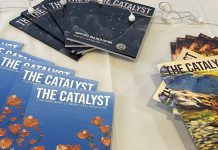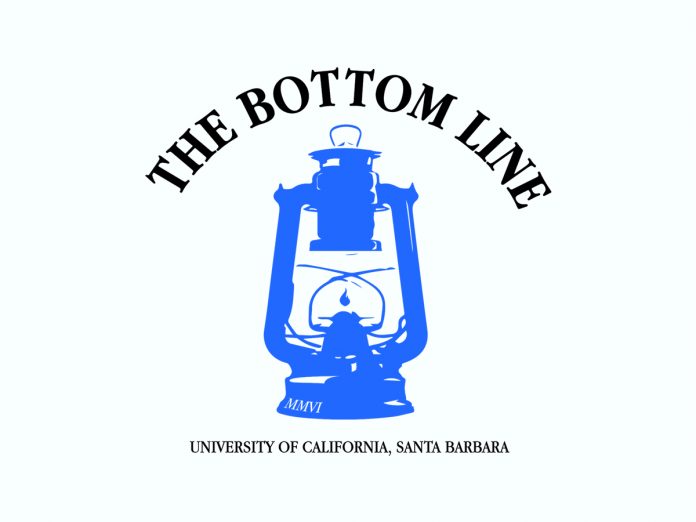Noah Treiman
Contributing Writer
UCSB’s physics professor Cristina Marchetti was recently elected to the National Academy of Sciences (NAS) for her study of active matter.
The NAS is a private, non-profit organization in the United States, founded in 1863. According to its website, it “is charged with providing independent, objective advice to the nation on matters related to science and technology.” Of the 2,380 members and 485 foreign associates, 190 have won Nobel Prizes and 42 are UCSB faculty. Marchetti was elected for her significant contributions to the field of active matter.
Before coming to UCSB, Marchetti was a faculty member at Syracuse University. She was chair of the physics department, and helped build a strong research program in soft-matter physics.
“Clearly the work that led to my election to the NAS was done there, with excellent colleagues and students,” Marchetti said.
Growing up in Italy, Marchetti studied condensed matter physics at the University of Pavia. She was awarded a Fulbright scholarship to University of Gainesville, and her PhD thesis was titled “Fluctuations in systems far from equilibrium,” a topic that led to her study of active matter.
Active matter is made up of particles that can propel themselves and extract energy from their surroundings. It exhibits interesting properties distinct from ordinary non-living matter.
“Atoms interact together to form a material, and cells interact with each other to form a tissue. An organ makes an organism and so on,” Marchetti said in an interview with The Bottom Line.
“[M]ore recently what this field of active matter actually focuses on are these agents, they are particles that use up energy to generate their own motion, such as a bacterium in a fluid, or a flock of birds.”
“My field is really describing what we call ‘the collective behavior’, how the macroscopic behavior of things composed of many interacting objects emerges essentially from interactions,” Marchetti continued.
One example is the clustering behavior of bacteria at the edges of a container, instead of spreading out uniformly like you might expect.
“If a self-propelled particle goes in a straight line … it will hit the wall nose first, and if other particles arrived before you have time to change your direction, then you’ll be stuck at the bottom and start making a cluster.”
A class of phenomena Marchetti studies is ‘phase transitions’. ‘Phase’ is a term used to describe some quality of a material that scientists find important. For example, room-temperature water is in the liquid phase and ice is in the solid phase. While each molecule is still H2O, the collective behavior of the material changes due to each particle’s motion.
Active matter also undergoes phase transitions, although they can be dependent factors far different from temperature and pressure.
A flock of birds — formed when enough birds congregate together — illustrates this.
“Every time [one] of these birds looks at the neighbors within a region, it tries to align with rest,” Marchetti said. “So there is a change of macroscopic behavior from a state where … these birds are all flying randomly in every direction to a state in which they’re all flying coherently in one direction and that’s what we mean by flock.”
One goal in active matter is to exploit these emergent properties to do useful things. Applications may include self-assembling nano-scale machines, and using flows of bacteria to rotate tiny gears.
Faithful to the laws of physics, Marchetti was careful to dispel the notion of creating energy from nothing.
“Of course it’s not for free, it’s not like you’re breaking the Second Law of Thermodynamics, because you have to feed the bacteria,” Marchetti said.
That law states that, given enough time, all the energy in a closed system will distribute itself evenly as heat. No work, such as moving a turbine, can be done at that point. Active matter cannot run indefinitely in a closed system, new energy is put into the system in the form of food. Think of an engine that continuously needs fuel to keep going.
A major focus of study of Marchetti’s is fluids that flow spontaneously, without any applied forces or pressure differences. One class of active matter, ‘active nematics’, which is part of a larger group known as liquid crystals, involves long filaments that form a fluid and whose individual movements collectively sum up to make the fluid flow in a given direction. Marchetti has worked with the Dogic Group in understanding their unique behavior.
Marchetti’s work describes ‘topological defects’ that arise in these self-sustained flows, which are basically small, localised regions in the fluid where it doesn’t flow uniformly. One example of a topological defect is a whirlpool on the surface of a river. Defects in active matter are especially interesting because they are self-sustaining and can even be considered active particles themselves, and may affect the overall behavior of the fluid.
A recent interest for Marchetti is morphogenesis, the process that determines the distribution of cells in an organism throughout its development. This field is concerned with the genes and proteins multicellular structures which can shape it into the various complex structures that make up an organism.
While it may not happen tomorrow, Marchetti says that understanding morphogenesis is “definitely within reach.”
Active matter, which is on the intersection of physics and biology, is a promising new way to study how collections of living things organize themselves. Over the last two decades, Marchetti and other researchers have shown that the behaviors of living systems on any length scale, from a flock of birds to a living tissue, emerge from simple rules, similar to those that describe inert matter.
In collaboration with research efforts at UCSB and around the country, Marchetti continues to push the predictive power of physics into the domain of living systems.









A class of phenomena Marchetti studies is ‘phase transitions’. ‘Phase’ is a term used to describe some quality of a material that scientists find important. For example, room-temperature water is in the liquid phase and ice is in the solid phase. While each molecule is still H2O, the collective behavior of the material changes due to each particle’s motion.
Comments are closed.